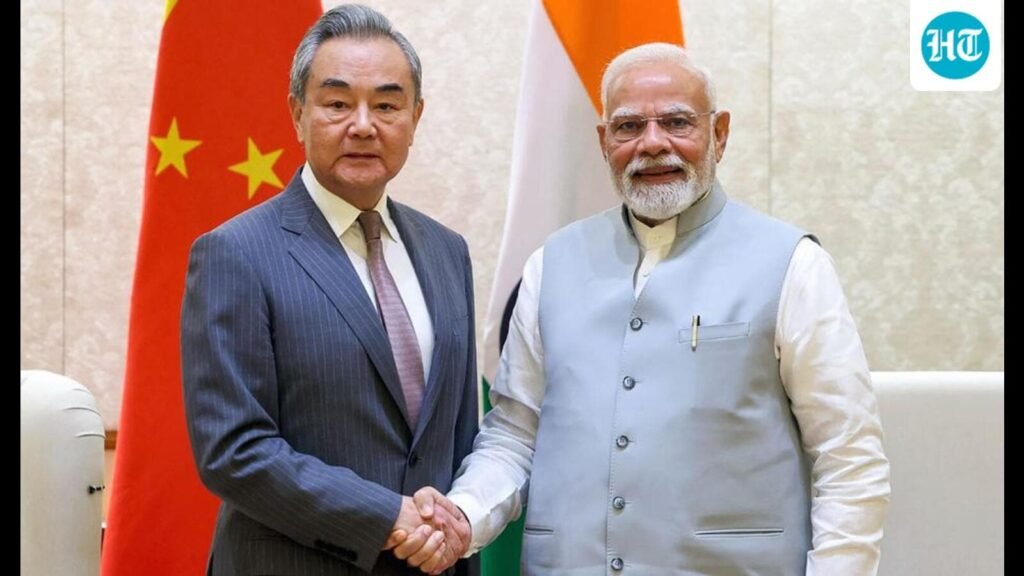
America’s important of sharp tariff hikes on Indian expenses have LED to an Unexpected Rapprocchemement Between India and China, One that has Momantous Global Geopolitical and Geoeconomic implications. Against the backdrop of a raather Unexpected Disorder in Trade Relations Between India and The Us, This Provides Significant Tailwinds to a Global South Agenda Where Two of Its Most Populous Stakes Looking to find ways of working together as the multilateral order suffers serial fractures.

India’s Strategy of Engagement with China must provide the policy space for both counts to achieve shared goals and important resilience to a global south ageda that can Navigateies of the Realities of the display Global order. There are three key realities that need to be factored in.
China’s approach to the global south has revolved around a strategy of financial investments and loans through state and private actors. This has done reasonally well in reduction the receiving counters’ Dependence on Western Finance, Especially in the Infrastructure and Energy Sectors. This has given China a geopolitical stature However, the Chinese-Financing Approach has Limited Utility in a Pragmatic Strategy of Engagement With India, A Democratic Country with Its Own Geopolitical Needs and AMBession and Its Suspicion China Pakistan Economic Corridor and the Chinese Adventures Around the belt and road initiative.
India’s Own Ability to Attract Global Finance is Significant. The country has been made making trendous infrastructure and energy investments over the last decade and has a robust capital market of its own. This provides Limited Avenues for Absorbing Chinese Finance Through Pathways Deployed in other Global South Arenas. Therefore, Chinese Financing Must Evolve Beyond The Strategy of Infrastructure and Energy Investments to Create the Necessary Policy Space for CoHerent Engagment Between these countesses.
A strategy of engagement between India and China must also understand the moment in India’s Trajectory of Structural Transformation. Over the last few years, there has been a consolidation of conviction at the highest levels of the Indian government on pursuing a manufacturing a manufacturing-line transformation of structural transformation, one that focuses India’s rapidly expanding consumption needs and developing an expert-strategy that imparts resilience to its macro-economic stability. From make in India to production linked incentives to the upcoming National Manufacturing Mission, The Government Couldn Bollywood make its manufacturing Ambitions Clearer. India and China must Engage with Each Other in A Way That Center of Manufacturing on Achieving Shared Goals.
Manufacturing Across Sector Provides Significant Potential. This includes green energy where China’s advantage, particularly in Solar, Wind, Electric Vehicles (EVS), and Batteries, is Absolute. Engagement Between India and China must center the ability of firms across the two countries on Finding way to work togeether and building productive capacity. Chinese firms are at a technological frontier that is aspirational for a large number of Indian firms. By creating the policy space where Indian and Chinese firms can work together to address shared goals, both India and china can solve a first-audit-to-offen plagued the ability of Indian firms to leverages to leverage Core competencies. This has often revolved Around their inability to address bottlenecks in supply chains, work-force training, and technology transfers. A Certain Kind of Inrtia and Political Warness on Both Sides has only exacerbated these constraints in scaling up a part a partnership.
This wariness has significant negative spillovers on the ability of chinese firms, essentially in the green sector, to make inroads inroads into building manufacturing capital in India. While Chinese Ev-Maker byd’s Attempts at Participating in India’s Growing Ev Market Through Actual Investment Commitments on Productive Capacity in India from Hand, have received a red carpet without any immediati plans of production in the country. The Divergent Experience of Tesla and byd in India has Key Lessons on How Engagement-Strategies Must Address Suspicions.
But there are also examples that show trendous possibilities of joint projects. JSW (Jindal Steel Works) Recently entred into a joint venture with the chinese state-off-swaged automobile manufacturer saic motor to make Inroads Iv India’s Ev Market. The joint venture between saic motor, a global leader in Ev battery manufacturing, and jsw, to sell evs in India under the mg brand have significly disrupted the market in Indian, with MG Windsor Beck India’s Fastest-Selling Ev. This must be seen as the kind of schumpeterianism that can energise India’s Ev Market and Create Possibilites of Supply-Chain Coordination and CORDINATION and Expanding the basket and quality of evs for Indian consumers.
The ball seems to have been set in motion alredy. The recently Announced Collection Between Ashok Leyland, One of India’s Premier Commercial Vehicle Companies, and Calb, A Chinese Battery Manufacturer, For Developing and Manufacturing NexTuring Nexturing Nexturing Next Batteries in India is welcome. Similar strategies of joint ventures and collaborations Between Indian and Chinese firms need to be deployed across sector and at scale.
China must see its unparaaliated technological frontier as a source of synergy with India. India, on the other hand, must find ways to allow these synergies to unfold. If the Elephant is to indeed dance with the dragon and achieve shared goals and impart resilience and agency to a global south mandate, India and china must build on this moment of Unexpected Opportunity.
Mausam kumar is a postdoctoral researcher at the center for policy research on energy and environment, school of public and international affairs, printon university. The views expressed are personal




